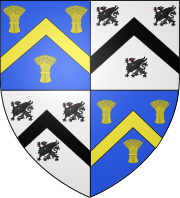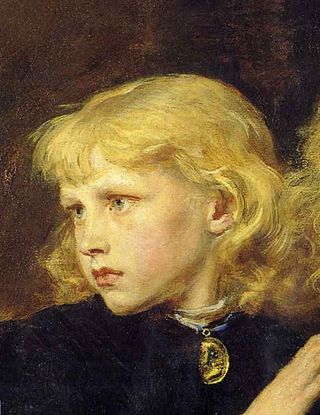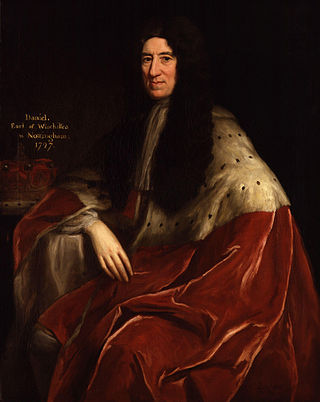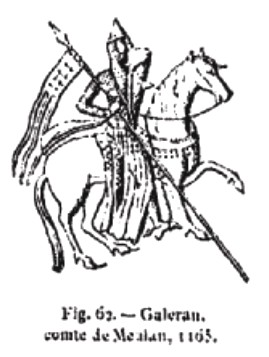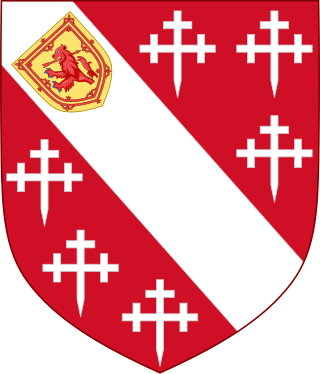| | | | | | | | | | | | Earl of East Anglia
(Earls of Norfolk and Suffolk)
(1st creation), before 1069 |
|
| | | | | | | | | | | | Ralph the Staller
(c. 1011–1068)
1st Earl of Norfolk and Suffolk, or of the East Anglesc. 1066/67–1068 |
|
| | | | | | | | | | | | | | | |
|
| | | | | | | | | | | | Ralph de Gael
(c. 1040 – c. 1096)
2nd Earl of Norfolk and Suffolk, or of the East Angles until 1074 |
|
| | | | | | | | | | | | Earldom forfeit, 1074 | | Earl of Norfolk (2nd creation), 1141 |
|
| | | | | | | | | | | | | | | | Hugh Bigod
(1095–1177)
1st Earl of Norfolk 1141–1177 |
|
| | | | | | | | | | | | | | | | | | | |
|
| | | | | | | | | | | | | | | | Roger Bigod
(c. 1144/1150–1221)
2nd Earl of Norfolk 1189–1221 (disputed 1177–1189) |
|
| | | | | | | | | | | | | | | | | | | |
|
| | | | | | | | | | | | | | | | Hugh Bigod
(1186–1225)
3rd Earl of Norfolk 1221–1225 |
|
| | | | Baron Segrave of Se(a)grave, 1283 | | | | | | | | | | | | | | | | | | |
| | | | |
| | | | Nicholas Segrave
(c. 1238–bef. 1295)
1st Baron Segrave | | | | | | | | | | Roger Bigod
(c. 1209–1270)
4th Earl of Norfolk 1233–1270 | | Hugh Bigod
(c. 1211–1266) |
|
| | | | | | | | | | | | | Baron Mowbray, 1283 | | | | | | | | | |
|
| | | | John Segrave
(c. 1256–1325)
2nd Baron Segrave | | King Edward I
(1239–1307) | | Roger de Mowbray
(1254–1297)
1st Baron Mowbray | | | | | | Roger Bigod
(c. 1245–1306)
5th Earl of Norfolk 1270–1306 |
|
| | | | | | | | | | | | | | | | | | | | | | | Earldom extinct, 1270 |
|
| | | | | | | | | Earl of Norfolk (3rd creation), 1312 | | | | | |
|
| | | | Stephen Segrave
(d. 1325)
3rd Baron Segrave | | Thomas of Brotherton
(1300–1338)
1st Earl of Norfolk 1312–1338 | | John Mowbray
(1286–1322)
2nd Baron Mowbray |
|
| | | | | | | | | | | | | | | | | |
|
| | | | John Segrave
(1315–1353)
4th Baron Segrave | | Margaret of Brotherton
(1320–1399)
2nd Countess of Norfolk 1338–1399, Duchess of Norfolk"for life" 1397–1399 | | John Mowbray
(1310–1361)
3rd Baron Mowbray |
| |
| | | | | | | | | | | | | | | | | |
| | |
| | | | | | | | Elizabeth de Segrave
(1338–1368)
5th Baroness Segrave | | John de Mowbray
(1340–1368)
4th Baron Mowbray |
| |
| | | | | | | | | | | | | | | | | |
| | | | | |
| | | | | | | | Earl of Nottingham (1st creation), 1377 | | Earl of Nottingham (2nd creation), 1383
Duke of Norfolk (1st creation), 1397 |
|
| | | | | | | | John de Mowbray
(1365–1383)
1st Earl of Nottingham, 6th Baron Segrave, 5th Baron Mowbray | | Thomas de Mowbray
(1366–1399)
1st Duke of Norfolk 1397–1399, 3rd Earl of Norfolk 1399, 7th Baron Segrave, 6th Baron Mowbray |
|
| | | | | | | | Earldom of Nottingham extinct, 1383 | | Titles forfeit, 1399 | | | |
|
| | | | | | | | | | | | | | | | | | | | | | | | | | | | | |
| | | | | | | | | | | | | | | | | | | | | | | |
| Baron Stourton, 1448 | | | | | | | Duke of Norfolk (1st creation restored), 1425 | | | | | | | | | | | | | | | | | | |
|
John Stourton
(1400–1462)
1st Baron Stourton, 1448–1462 | | Thomas de Mowbray
(1385–1405)
4th Earl of Norfolk, 8th Baron Segrave, 7th Baron Mowbray 1399–1405 | | John de Mowbray
(1392–1432)
2nd Duke of Norfolk 1425–1432, 5th Earl of Norfolk, 9th Baron Segrave, 8th Baron Mowbray 1405–1432 | | | | | | Margaret de Mowbray
(c. 1388–1459) | | Robert Howard
(1385–1436) | | Isabel de Mowbray
(c. 1400–1452) | | James Berkeley, 1st Baron Berkeley
(c. 1394–1463) | |
| | |
| | | | | | | | | | | | | | | | | | | | | | | | | | |
| | |
| | | | | | | | | | | | | | | | | | | | | | Duke of Norfolk (4th creation), 1483 |
|
William Stourton
(before 1426–1478)
2nd Baron Stourton, 1462–1478 | | | | | | John de Mowbray
(1415–1461)
3rd Duke of Norfolk, 6th Earl of Norfolk, 10th Baron Segrave, 9th Baron Mowbray 1432–1461 | | | | | | | | | | John Howard
(1425–1485)
1st Duke of Norfolk, 13th Baron Segrave, 12th Baron Mowbray 1483–1485 |
|
| | | | | | | | | | | | | | | | | | | | | | | Titles forfeit, 1485 |
| | | | | | | |
| | | | | | | | | | | | | | | | | | | | | | | | | | | |
|
| | | | | | | | | | | Earl of Surrey and Warenne (2nd creation), 1451 | | | | | | | | | | Duke of Norfolk (4th creation) restored and Earl of Surrey, 1514 |
|
John Stourton
(c. 1454–1485)
3rd Baron Stourton, 1479–1485 | | William Stourton
(c. 1457–1524)
5th Baron Stourton, 1487–1524 | | | John de Mowbray
(1444–1476)
4th Duke of Norfolk, 7th Earl of Norfolk, Earl of Surrey and Warenne, 11th Baron Segrave, 10th Baron Mowbray 1461–1476 | | King Edward IV
(1442–1483) | | | | | | Thomas Howard
(1443–1524)
2nd Duke of Norfolk, 1st Earl of Surrey 1514–1524 |
|
| | | | | | | | | | Dukedom of Norfolk, Earldom of Nottingham, Earldom of Surrey and Warenne extinct, 1476 | | | | | | | | | | | | | | | | | | | | | | | | |
| | | | | | | | | | | | | | |
| | | | | | | | | | | | | | | | Duke of Norfolk (3rd creation), Earl of Nottingham (3rd creation), and Earl of Warenne, 1477 | | | | | | | | | | | | | | | | | | | | |
| | | |
Francis Stourton
(1485–1487)
4th Baron Stourton, 1485–1487 | | Edward Stourton
(1463–1535)
6th Baron Stourton, 1524–1535 | | Anne de Mowbray
(1472–1481)
8th Countess of Norfolk, 12th Baroness Segrave, 11th Baroness Mowbray 1476–1481 | | Richard of Shrewsbury
(1473–1483)
Duke of York, Duke of Norfolk, Earl of Nottingham, Earl of Warenne 1477–1483 | | Anne of York
(1475–1511) | | Thomas Howard
(1473–1554)
3rd Duke of Norfolk, 2nd Earl of Surrey 1524–1554 | | Edmund Howard
(c. 1478–1539) | | Elizabeth Boleyn
(c. 1480–1538) |
| |
| | | | | | | | | | Earldom of Norfolk extinct and Baronies Segrave and Mowbray in abeyance, 1481 | | Dukedom of Norfolk, Earldom of Nottingham, Earldom of Warenne extinct, 1483 | | | | | | Attainted, 1547
Restored, 1553 | | | | | | | | | | |
| | | | | |
| | | | | | | | | | | | | | | | | | | | | | | | | | | | | | | | | | | |
| | | | | | | | | | | | | | | | | | | |
| | | | | | | | | | | | | | | | | | | | | | | | | | | | | | | | | | | | | |
| | | | | |
William Stourton
(c. 1505–1548)
7th Baron Stourton | | | | | | | | | | | | | | | | | Earl of Nottingham (5th creation), 1525 | | | | | | | | King Henry VIII
(1491–1547) | | Anne Boleyn
(c. 1501 or 1507–1536) |
| | | |
| | | | | | | | | | | | | | | | | | | | | | | | | | | | | | | | | | | | | |
| | | | | | | | | | | |
Charles Stourton
(c. 1520–1557)
8th Baron Stourton | | Henry Howard
(1517–1547)
styled Earl of Surrey | | Thomas Howard
(c. 1520–1582)
Viscount Howard of Bindon | | Mary FitzRoy
(1519–1557) | | Henry FitzRoy
(1519–1536)
Duke of Richmond and Somerset, Earl of Nottingham | | Catherine Howard
(c. 1524–1542) | | | | | | | | |
| |
| | | | | | | | | | | | | | | | | | | Earldom of Nottingham extinct, 1536 | | | | | | | | | | | | |
| | | | | | | | | | | | | |
| | | | | | | | | Thomas Howard
(1536–1572)
4th Duke of Norfolk, 3rd Earl of Surrey, 13th Baron Mowbray 1554–1572 | | Henry Howard
(1540–1614)
Earl of Northampton | | | | | | | | | | Queen Elizabeth I
(1533–1603) |
|
| | | | | | | | | Dukedom (3rd creation) forfeit, 1572 |
|
| | | | | | | | | | | | | | | | | | | | | |
| | | | | | | | | |
| | | | | | | | | | Earl of Arundel (3rd creation), 1580 | | Earl of Suffolk (4th creation), 1603 | | | | | |
| | | | |
John Stourton
(1553–1588)
9th Baron Stourton | | Edward Stourton
(c. 1555–1633)
10th Baron Stourton | | Philip Howard
(1557–1595)
20th/13th/1st Earl of Arundel, styled Earl of Surrey | | Thomas Howard
(1561–1626)
Earl of Suffolk | | Lord William Howard
(1563–1640) |
|
| | | | | | | | | Earldom of Arundel and Barony Mowbray attainted, 1589 | | see Earls, Marquesses, and Dukes of Suffolk family tree |
|
| | | | | | | | | | | | |
|
| | | | | | | | | Earl of Arundel (3rd creation) and Barony Mowbray restored, 1604
Earl of Norfolk (5th creation), 1644 |
|
| | | | William Stourton
(c. 1594–1672)
11th Baron Stourton | | Thomas Howard
(1585–1646)
21st/14th/2nd Earl of Arundel, 2nd/4th Earl of Surrey, 1st Earl of Norfolk, 14th Baron Mowbray 1644–1646 | | | | | | | |
|
| | | | | | | | | | | | | | see Earls of Shrewsbury family tree |
|
| | | | Edward Stourton
(1617–1644) | | Henry Frederick Howard
(1608–1652)
22nd/15th/3rd Earl of Arundel, 3rd/5th Earl of Surrey, 2nd Earl of Norfolk, 15th Baron Mowbray 1646–1652 | | Alethea Howard
1585–1654
17th Baroness Strange of Blackmere, 14th Baroness Talbot, 13th Baroness Furnivall | | | |
| |
| | | | | | | | | | | | | | | | | | | | | | | | | | | | | | |
| | | | | | | | | | | | | | | | | | | |
| | | | | | | | | Duke of Norfolk (4th creation restored), 1660 | | Baron Howard of Castle Rising, 1669
Earl of Norwich (3rd creation), 1672 | | | | | | | | | | | | | | |
|
| | | | William Stourton
(d. 1685)
12th Baron Stourton | | Thomas Howard
(1627–1677)
5th Duke of Norfolk, 21st/14th/2nd Earl of Arundel, 4th/6th Earl of Surrey, 16th Baron Mowbray 1660–1677
18th Baron Strange of Blackmere, 15th Baron Talbot, 14th Baron Furnivall 1654–1677 | | Henry Howard
(1628–1684)
6th Duke of Norfolk, 22nd/15th/3rd Earl of Arundel, 5th/7th Earl of Surrey, 1st Earl of Norwich and Baron Howard of Castle Rising, 18th Baron Strange of Blackmere, 17th Baron Mowbray, 15th Baron Talbot, 14th Baron Furnivall 1672–1684 | | | | | | Hon. Charles Howard
(1630–1713) | | Col. Bernard Howard
(1641–1717) |
|
| | | | | | | | | | | | | | | | | | | | | | | | | | | | | | | | | |
| | | | | | | | | | | | | | | |
Edward Stourton
(1665–1720)
13th Baron Stourton | | Thomas Stourton
(1667–1744)
14th Baron Stourton | | Charles Stourton
(1669–1739) | | Henry Howard
(1655–1701)
7th Duke of Norfolk, 22nd/15th/3rd Earl of Arundel, 5th/7th Earl of Surrey, 2nd Earl of Norwich and Baron Howard of Castle Rising, 18th Baron Mowbray, 19th Baron Strange of Blackmere, 15th Baron Talbot, 14th Baron Furnivall, 1684–1701 | | Lord Thomas Howard
(1662–1689) | | Henry Charles Howard
(d. 1720) | | | | | |
|
| | | | | | | | | | | | | | | | | | | | | | | | | | | | | | | |
| | | |
| | | | | | | | | | | | | | | | | | | | | | | | | | | | | | | |
| | | | | | | | | | |
| | | | | | | | | Thomas Howard
(1683–1732)
8th Duke of Norfolk, 23rd/16th/4th Earl of Arundel, 6th/8th Earl of Surrey, 3rd Earl of Norwich and Baron Howard of Castle Rising, 18th Baron Strange of Blackmere, 15th Baron Talbot, 14th Baron Furnivall, 19th Baron Mowbray 1701–1732 | | Edward Howard
(1685–1777)
9th Duke of Norfolk, 24th/17th/5th Earl of Arundel, 7th/9th Earl of Surrey, 4th Earl of Norwich and Baron Howard of Castle Rising, 20th Baron Mowbray, 20th Baron Strange of Blackmere, 15th Baron Talbot, 14th Baron Furnivall 1732–1777 | | Philip Howard
(1688–1750) | | | | | | | Bernard Howard
(1674–1735) |
|
| | | | | | | | | | | | | Earldom of Norwich (3rd creation) and barony of Howard of Castle Rising extinct and Baronies Furnivall, Mowbray, Segrave, Strange of Blackmere, and Talbot abeyant, 1777 | | | | | | | | | | | | | | | |
|
| | | | | | | | | | | | | | | | | | | | | | | | | | | | | | | | | |
| | | | | | | | | | | |
| | | | Charles Stourton
(1702–1753)
15th Baron Stourton | | William Stourton
(1704–1781)
16th Baron Stourton | | Winifred Howard
(1726–1753) | | Anne Howard
(1742–1787) | | Charles Howard
(1720–1786)
10th Duke of Norfolk, 25th/18th/6th Earl of Arundel, 8th/10th Earl of Surrey 1777–1786 | | Henry Howard
(1713–1787) |
| |
| | | | | | | | | | | | | | | | | | | | | | | | | | | | | | |
| | | |
| | | | | | | | Charles Philip Stourton
(1752–1816)
17th Baron Stourton | | | | | | | | | | Charles Howard
(1746–1815)
11th Duke of Norfolk, 26th/19th/7th Earl of Arundel, 9th/11th Earl of Surrey 1786–1815 | | | | | |
|
| | | | | | | | | | | | | | | | | | | | | | | | | | | | |
|
| | | | | | | | William Stourton
(1776–1846)
18th Baron Stourton | | | | | | | | | | | | | | Bernard Howard
(1765–1842)
12th Duke of Norfolk, 27th/20th/8th Earl of Arundel, 10th/12th Earl of Surrey 1815–1842 |
|
| | | | | | | | | | | | | | | | | | | | | | | | | | | | |
|
| | | | | | | | Charles Stourton
(1802–1872)
19th Baron Stourton | | | | | | | | | | | | | | Henry Howard
(1791–1856)
13th Duke of Norfolk, 28th/21st/9th Earl of Arundel, 11th/13th Earl of Surrey 1842–1856 |
|
| | | | | | | | | | | | | | | | | | | | | | | | | | | | | |
| | | | | |
| | | | | | | | Baron Mowbray and Baron Segrave abeayance restored, 1878 | | | | | | | | | | | | | | | Baron Howard of Glossop |
|
| | | | | | | | Alfred Joseph Stourton
(1829–1893)
24th Baron Segrave, 21st/23rd Baron Mowbray, 20th Baron Stourton | | | | | | | | | | Henry Granville Fitzalan-Howard
(1815–1860)
14th Duke of Norfolk, 29th/22nd/10th Earl of Arundel, 12th/14th Earl of Surrey 1856–1860 | | Edward George Fitzalan-Howard
(1818–1883)
1st Baron Howard of Glossop |
|
| | | | | | | | | | | | | | | | | | | | | | | | | | | | | |
|
| | | | | | | | Charles Botolph Joseph Stourton
(1867–1936)
25th Baron Segrave, 22nd/24th Baron Mowbray, 21st Baron Stourton | | | | | | | | | | Henry Fitzalan-Howard
(1847–1917)
15th Duke of Norfolk, 30th/23rd/11th Earl of Arundel, 13th/15th Earl of Surrey, Lord Maltravers, Earl of Arundel and Surrey 1860–1917 | | Francis Fitzalan-Howard
(1859–1924)
2nd Baron Howard of Glossop |
|
| | | | | | | | | | | | | | | | | | | | | | | | | | | | | |
|
| | | | | | | | William Marmaduke Stourton
(1895–1965)
26th Baron Segrave, 23rd/25th Baron Mowbray, 22nd Baron Stourton | | | | | | | | | | Bernard Fitzalan-Howard
(1908–1975)
16th Duke of Norfolk, 31st/24th/12th Earl of Arundel, 14th/16th Earl of Surrey 1917–1975 | | Bernard Fitzalan-Howard
(1885–1972)
3rd Baron Howard of Glossop |
|
| | | | | | | | | | | | | | | | | | | | | | | | | | | | |
|
| | | | | | | | Charles Edward Stourton
(1923–2006)
27th Baron Segrave, 24th/26th Baron Mowbray, 23rd Baron Stourton | | | | | | | | | | | | | | Miles Fitzalan-Howard
(1915–2002)
17th Duke of Norfolk, 32nd/25th/13th Earl of Arundel, 15th/17th Earl of Surrey, 4th Baron Howard of Glossop 1975–2002 |
|
| | | | | | | | | | | | | | | | | | | | | | | | | | | | |
|
| | | | | | | | Edward William Stephen Stourton
(1953–2021)
28th Baron Segrave, 25th/27th Baron Mowbray, 24th Baron Stourton | | | | | | | | | | | | | | Edward Fitzalan-Howard
(b. 1956)
18th Duke of Norfolk, 33rd/26th/14th Earl of Arundel, 16th/18th Earl of Surrey, 5th Baron Howard of Glossop from 2002 |
|
| | | | | | | | | | | | | | | | | | | | | | | | | | | | |
|
| | | | | | | | James Charles Peter Stourton
(b. 1991)
29th Baron Segrave, 26th/28th Baron Mowbray, 25th Baron Stourton | | | | | | | | | | | | | | Henry Fitzalan-Howard
(b. 1987)
styled Earl of Arundel and Surrey |
|

